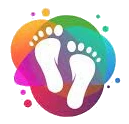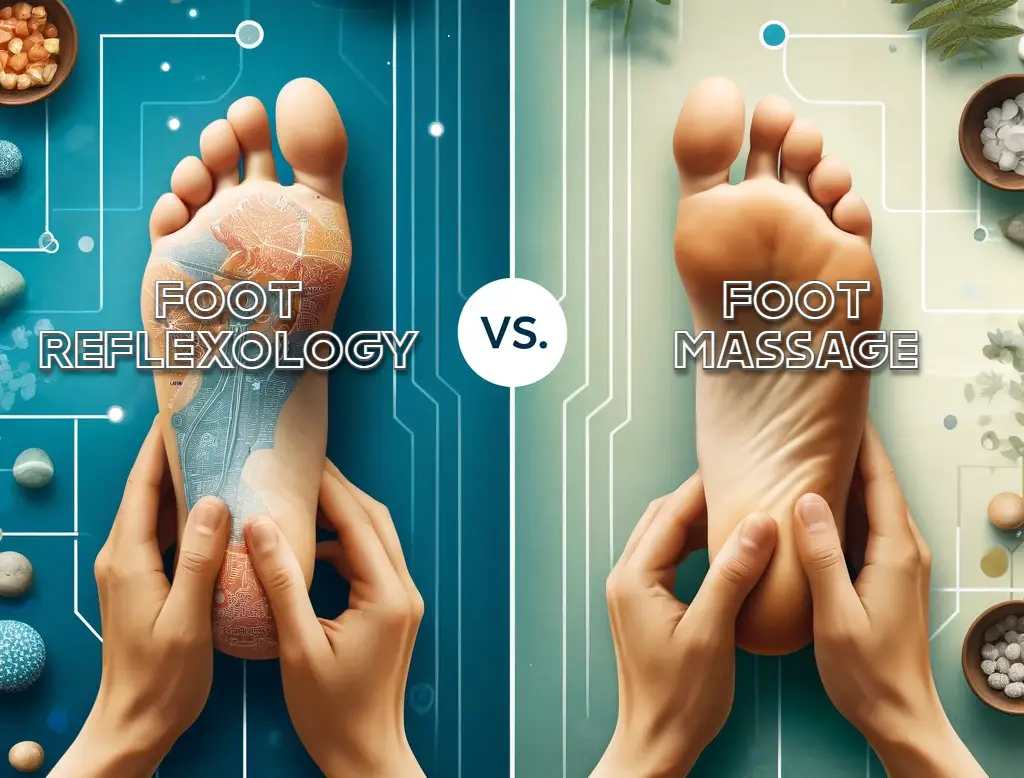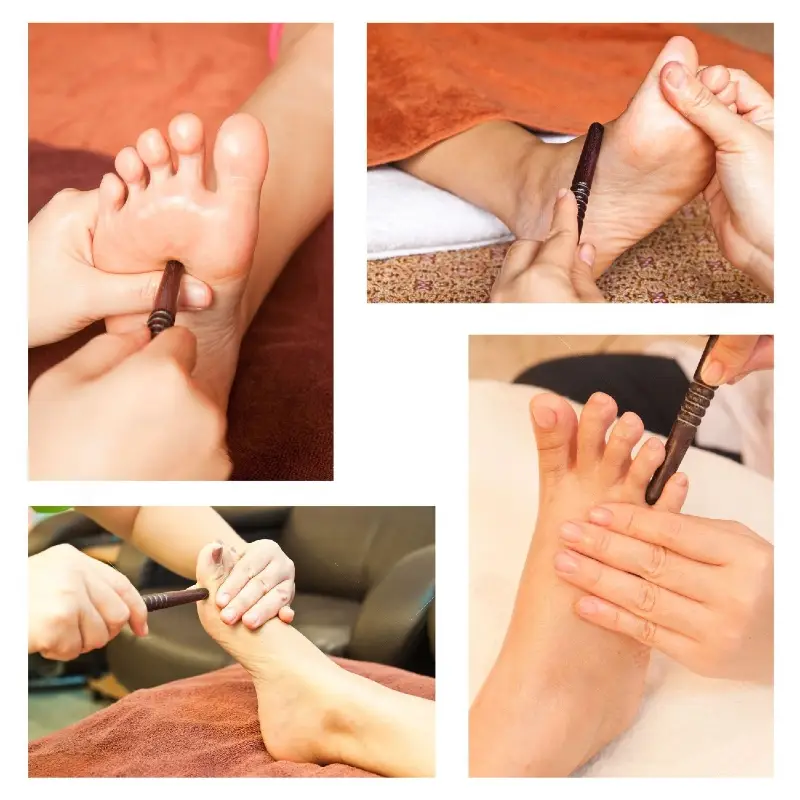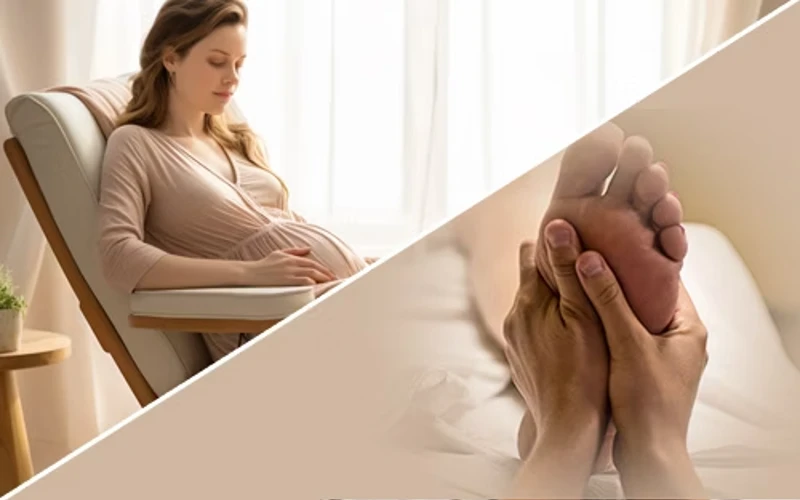When it comes to foot care, two popular therapies often come to mind: foot reflexology and traditional foot massage. Though both treatments focus on the feet, they are distinct in their methods, philosophies, and benefits. This detailed comparison aims to help you decide which therapy best suits your needs. We’ll explore the origins, techniques, benefits, and specific applications of each therapy to provide you with a comprehensive understanding.
Key Sections of Foot Reflexology vs. Foot Massage
Understanding Foot Reflexology
Foot reflexology is an ancient therapeutic practice rooted in Chinese medicine, believed to date back over 5,000 years. It operates on the principle that specific points on the feet correspond to various organs and systems in the body. By applying pressure to these reflex points, reflexologists aim to stimulate the corresponding organs, promoting overall health and well-being.
Key Principles of Foot Reflexology:
- Reflex Points: Reflexologists map the feet with zones corresponding to different parts of the body. For instance, the tips of the toes are believed to correspond to the head, while the arch of the foot corresponds to the digestive organs.
- Energy Flow: Reflexology is based on the concept of Qi (Chi), the body’s vital energy. It is believed that blockages in this energy flow can lead to illness. Reflexology aims to remove these blockages and restore balance.
- Holistic Approach: Unlike treatments that target specific symptoms, reflexology addresses the body as a whole. The goal is to treat underlying imbalances that may cause symptoms.
History and Origins:
Reflexology’s origins are found in various ancient cultures. The earliest evidence dates back to ancient Egypt, where tomb paintings depict foot massage practices. The practice also has roots in China and India, where pressure therapies were integral to traditional medicine. Modern reflexology was developed by Dr. William Fitzgerald in the early 20th century, who introduced “zone therapy.” Later, Eunice Ingham further refined the practice, mapping out detailed reflex points on the feet.
Benefits of Foot Reflexology:
- Stress Reduction: Reflexology is renowned for its ability to reduce stress and promote relaxation. By stimulating the nervous system, it helps balance the body’s stress-response mechanisms.
- Pain Relief: Reflexology can alleviate pain by targeting specific reflex points. It is particularly effective for headaches, back pain, and menstrual cramps.
- Improved Circulation: Reflexology enhances blood flow and lymphatic drainage, aiding in detoxification and improving overall health.
- Boosted Immune System: Regular reflexology sessions can strengthen the immune system, helping the body fend off illnesses.
- Enhanced Nerve Function: By stimulating over 7,000 nerve endings in each foot, reflexology can enhance nerve function and responsiveness.
- Better Sleep: Reflexology can improve sleep patterns by promoting relaxation and reducing anxiety.
- Hormonal Balance: It can help regulate hormonal imbalances, benefiting conditions like PMS and menopause.
Techniques Used in Foot Reflexology:
Reflexologists use specific thumb, finger, and hand techniques to apply pressure to reflex points. The movements are precise and systematic, often involving:
- Thumb Walking: A technique where the thumb moves in a caterpillar-like motion to apply pressure.
- Finger Walking: Similar to thumb walking but using the fingers to cover smaller areas.
- Rotational Movements: Circular motions applied to specific points to stimulate deeper tissues.
- Press and Release: Applying and then releasing pressure to enhance circulation and energy flow.
Understanding Foot Massage
Foot massage is a more general term that encompasses various techniques aimed at relieving tension and promoting relaxation in the feet. Unlike reflexology, foot massage does not focus on specific reflex points but instead targets the muscles, tendons, and tissues of the feet.
Key Principles of Foot Massage:
- Muscle Manipulation: Foot massage involves kneading, rubbing, and applying pressure to the muscles and soft tissues of the feet. This helps relieve tension and promote relaxation.
- Relaxation: The primary goal of foot massage is to relax the muscles, reduce tension, and improve flexibility.
- Localized Treatment: Foot massage focuses on the feet and lower legs, providing relief from soreness and fatigue.
History and Origins:
Foot massage has a long history across many cultures. In ancient Egypt, Greece, and Rome, foot massage was a common practice for relaxation and healing. In China and India, it has been part of traditional medicine for centuries. Unlike reflexology, foot massage did not develop a systematic theory of reflex points but instead evolved as a practical approach to relieving foot discomfort and enhancing well-being.
Benefits of Foot Massage:
- Relaxation: Foot massage is highly effective at inducing relaxation and reducing stress. The gentle manipulation of the feet can trigger the release of endorphins, the body’s natural painkillers and mood elevators.
- Pain Relief: Foot massage can alleviate foot pain, plantar fasciitis, and muscle cramps by loosening tight muscles and improving flexibility.
- Improved Blood Flow: Massaging the feet can enhance circulation, reducing swelling and promoting healing. This is particularly beneficial for individuals with poor circulation or diabetes.
- Better Sleep: Regular foot massages can improve sleep quality by promoting relaxation and reducing anxiety.
- Enhanced Mobility: By reducing tension and increasing flexibility, foot massage can improve overall mobility and reduce the risk of foot injuries.
- Detoxification: The increased blood flow from foot massage can help flush out toxins and improve overall health.
Techniques Used in Foot Massage:
Foot massage techniques are varied and can include:
- Effleurage: A gentle stroking technique used to warm up the muscles and improve circulation.
- Petrissage: A kneading motion that targets deeper muscle layers to relieve tension.
- Friction: Circular or cross-fiber movements that help break down adhesions and improve flexibility.
- Tapotement: Rhythmic tapping or chopping motions to stimulate nerves and muscles.
- Joint Mobilization: Gentle movements of the foot and ankle joints to improve range of motion and reduce stiffness.
Comparing Foot Reflexology and Foot Massage
1. Approach and Technique:
- Foot Reflexology: Uses specific thumb, finger, and hand techniques to apply pressure to reflex points. It focuses on stimulating these points to affect corresponding body parts.
- Foot Massage: Involves various techniques such as kneading, rubbing, and pressing to relax muscles and tissues. It does not target specific reflex points.
2. Holistic vs. Localized Treatment:
- Foot Reflexology: Takes a holistic approach, aiming to improve overall health and balance the body’s energy. It treats the entire body through the feet.
- Foot Massage: Focuses on localized treatment, providing relief to the feet and lower legs. It primarily addresses physical discomfort in the feet.
3. Benefits Beyond the Feet:
- Foot Reflexology: Claims to benefit the entire body, including internal organs and systems. It can help with conditions like migraines, digestive issues, and hormonal imbalances.
- Foot Massage: Primarily benefits the feet and lower legs, with general relaxation effects. It is particularly effective for foot pain, muscle tension, and improved circulation.
4. Techniques and Training:
- Foot Reflexology: Requires specialized training to understand reflex points and their corresponding body parts. Reflexologists undergo extensive education and certification.
- Foot Massage: While training is beneficial, it is generally less specialized compared to reflexology. Many massage therapists include foot massage as part of their overall training.
5. Immediate vs. Long-term Effects:
- Foot Reflexology: Can have immediate effects on relaxation and pain relief, but its full benefits often manifest over multiple sessions. It aims for long-term health improvements.
- Foot Massage: Provides immediate relief from tension and discomfort. The benefits are often felt right away, making it ideal for quick relaxation and pain relief.
Which is Right for You?
Deciding between foot reflexology and foot massage depends on your specific needs and health goals. Here’s a guide to help you choose:
Consider Foot Reflexology If:
- Holistic Health Goals: You are looking for a therapy that addresses overall health and well-being, not just localized foot issues.
- Chronic Conditions: You suffer from chronic conditions such as migraines, digestive issues, hormonal imbalances, or stress-related disorders.
- Preventive Care: You are interested in preventive care and maintaining a balanced energy flow in your body.
- Systemic Benefits: You want to benefit multiple systems of the body, such as the nervous, digestive, and endocrine systems.
Consider Foot Massage If:
- Localized Pain Relief: You are seeking relief from specific foot pain, muscle tension, or soreness.
- Immediate Relaxation: You want to relax and reduce stress quickly without focusing on broader health conditions.
- Improved Mobility: You need to improve foot flexibility and reduce the risk of injuries.
- Targeted Treatment: You prefer a more straightforward and direct approach to addressing foot and lower leg discomfort.
Practical Considerations
When deciding between foot reflexology and foot massage, consider the following practical aspects:
1. Availability and Access:
- Foot Reflexology: Reflexologists may be harder to find compared to general massage therapists. Ensure you have access to a qualified practitioner.
- Foot Massage: Many spas, wellness centers, and massage therapists offer foot massage, making it more widely available.
2. Time Commitment:
- Foot Reflexology: Sessions typically last between 30 to 60 minutes and may be part of a longer-term treatment plan.
- Foot Massage: Sessions can be shorter and more flexible, often ranging from 15 minutes to an hour, making it easier to fit into a busy schedule.
3. Cost:
- Foot Reflexology: Can be more expensive due to the specialized training and holistic approach. Costs may vary depending on the practitioner’s experience and location.
- Foot Massage: Generally more affordable and widely available, with prices varying based on the duration and setting (spa, wellness center, or private practice).
4. Personal Preference:
- Foot Reflexology: If you prefer a structured and holistic approach, reflexology may be more satisfying.
- Foot Massage: If you enjoy a more varied and less structured treatment, foot massage may be more appealing.
Frequently Asked Questions (FAQ) about Foot Reflexology and Foot Massage
What is the primary difference between foot reflexology and foot massage?
Foot reflexology focuses on stimulating specific reflex points on the feet that correspond to various organs and systems in the body, promoting overall health and balance. Foot massage, on the other hand, involves general techniques to relieve tension, improve circulation, and promote relaxation in the muscles and tissues of the feet.
Can foot reflexology and foot massage be combined in a single session?
Yes, many practitioners combine elements of both foot reflexology and foot massage in a single session to provide comprehensive care. This combination can enhance relaxation while also targeting specific health concerns.
How often should I have a foot reflexology session?
The frequency of foot reflexology sessions depends on your individual health goals and needs. For general wellness and maintenance, a session once every 2-4 weeks is common. For addressing specific health issues, more frequent sessions (weekly or bi-weekly) may be recommended initially.
Are there any contraindications for foot reflexology?
Yes, foot reflexology should be avoided or modified for individuals with certain conditions such as severe foot injuries, infections, open wounds, blood clots, or conditions that cause foot pain. Pregnant women should consult with their healthcare provider before starting reflexology.
Will foot reflexology hurt?
Foot reflexology should not cause pain. Some reflex points may feel tender or sensitive, especially if there is an underlying imbalance. However, the pressure applied should always be within your comfort level. Communicate with your reflexologist if you experience discomfort.
What can I expect during a foot reflexology session?
During a foot reflexology session, you will typically sit or lie down comfortably while the reflexologist applies pressure to specific points on your feet. The session usually lasts between 30 to 60 minutes. You may feel relaxed and experience a sense of well-being both during and after the session.
Is foot massage suitable for everyone?
Foot massage is generally safe for most people. However, individuals with certain conditions such as severe foot injuries, fractures, or circulatory problems should consult with their healthcare provider before receiving a foot massage.
How long does a foot massage session last?
Foot massage sessions can vary in length, typically ranging from 15 minutes to an hour. The duration depends on your preferences and the specific treatment plan. Shorter sessions can be great for quick relaxation, while longer sessions provide more thorough relief.
What are the immediate benefits of a foot massage?
Immediate benefits of a foot massage include reduced foot pain and muscle tension, improved circulation, relaxation, and a sense of overall well-being. Many people also report feeling less stressed and more rejuvenated after a session.
Can foot reflexology help with chronic conditions?
Foot reflexology can be a supportive therapy for managing chronic conditions such as migraines, digestive issues, and hormonal imbalances. While it is not a cure, reflexology can help alleviate symptoms and improve quality of life by promoting balance and relaxation.
How do I choose between foot reflexology and foot massage?
Consider your health goals and specific needs when choosing between foot reflexology and foot massage. If you seek a holistic approach that addresses overall health and specific conditions, reflexology may be more suitable. If you want immediate relief from foot tension and relaxation, a foot massage might be the better choice.
Do I need to prepare anything before a foot reflexology or foot massage session?
No special preparation is needed before a session. It is advisable to wear comfortable clothing and ensure your feet are clean. Communicate any specific concerns or health conditions to your practitioner beforehand.
Can I do foot reflexology or foot massage at home?
While professional sessions offer the best results, you can practice basic foot reflexology or massage techniques at home. There are various guides and tools available to help you learn these techniques. However, for addressing specific health concerns, professional treatment is recommended.
Are there any side effects of foot reflexology or foot massage?
Both therapies are generally safe with minimal side effects. Some people may experience mild soreness or fatigue after a session, which usually resolves quickly. If you have any medical conditions, consult with your healthcare provider before starting these therapies.
How do I find a qualified reflexologist or massage therapist?
To find a qualified reflexologist or massage therapist, look for practitioners who are certified and experienced in their respective fields. You can find qualified reflexologists and massage therapists through professional associations, referrals from healthcare providers, or online directories. Check reviews and ask about their training and experience before booking a session. For those in Auckland, consider visiting Reflexology Auckland and The Reflexologist for trusted and professional services.
Conclusion
Both foot reflexology and foot massage offer unique benefits, making them valuable tools in maintaining foot health and overall well-being. By understanding the differences between these therapies, you can choose the one that best aligns with your health goals and preferences. Whether you opt for the holistic approach of reflexology or the localized relief of a foot massage, your feet—and your body—will thank you for the care and attention.
Remember, the choice between foot reflexology and foot massage is not mutually exclusive. Many people benefit from incorporating both therapies into their wellness routines. By doing so, you can enjoy the immediate relaxation of a foot massage while reaping the long-term health benefits of reflexology. Consult with qualified practitioners to determine the best approach for your individual needs and start your journey to healthier, happier feet today.



